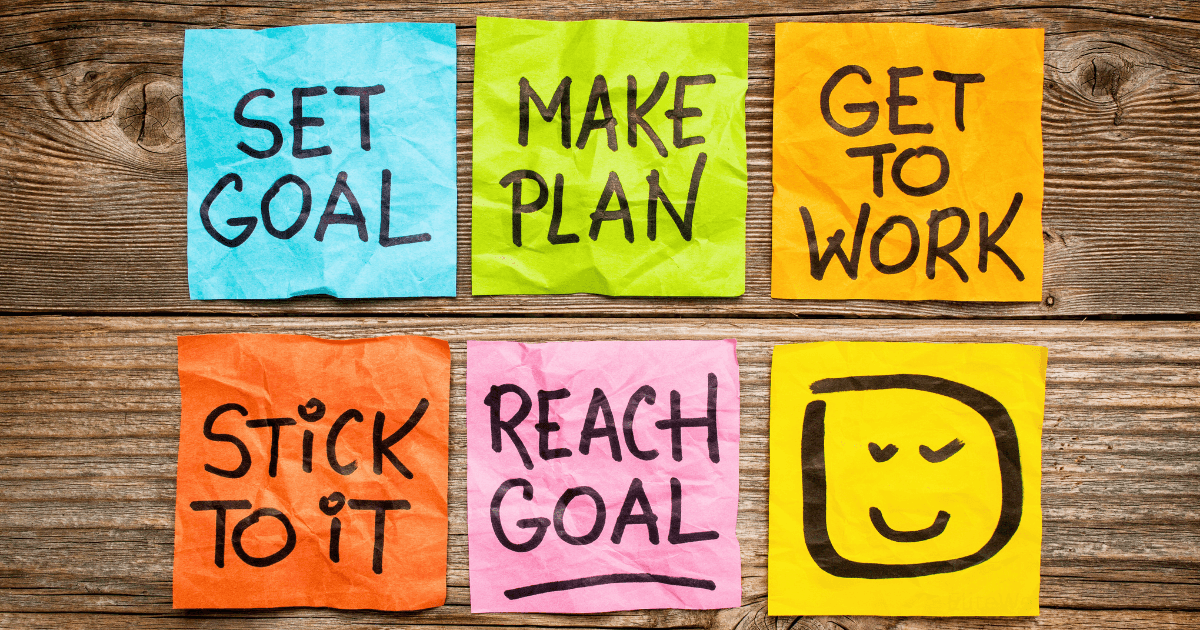Morning Routine Experiment: I Tried 5 Famous Routines to Find What Actually Works

For years, I’ve been fascinated by morning routines. As someone who historically hit the snooze button five times before reluctantly crawling out of bed and rushing through a chaotic morning, I wondered: Could adopting a structured morning routine actually transform my productivity, energy, and overall well-being?
Rather than cobbling together random morning habits, I decided to conduct a structured experiment. Over five weeks, I would test five different morning routines from famous high-performers, following each one precisely for seven days. I’d track specific metrics and determine which elements actually made a difference in my life.
The results surprised me—and challenged many of my assumptions about what makes an “optimal” morning routine.
The Experiment Design
Before diving into the routines, I established my methodology:
Duration: 5 weeks total (7 days per routine)
Metrics tracked daily:
- Energy level (1-10 scale, measured at 10am, 2pm, and 6pm)
- Productivity score (tasks completed vs. planned)
- Mood rating (1-10 scale, measured at end of day)
- Sleep quality (1-10 scale, based on Oura ring data)
- Stress level (1-10 scale, measured at end of day)
Control factors:
- Maintained consistent bedtime (10:30pm)
- Tracked caffeine intake
- Noted any unusual circumstances affecting results
With my tracking system in place, I selected five distinctly different routines from well-known high-performers, representing various approaches to morning rituals.
Routine #1: The Tim Cook “Early Riser” (Apple CEO)
The Routine:
- Wake at 3:45am
- Check and process emails for 1 hour
- 60-minute gym workout
- Shower and breakfast
- At desk by 6:30am
My Experience: The first morning was brutal. My alarm jolted me awake in what felt like the middle of the night. By day three, I was going to bed at 8:30pm just to function. Processing emails so early was surprisingly productive—zero distractions and inbox zero before most people were awake.
The gym was eerily empty at 5am, which meant no waiting for equipment. However, by afternoon, I experienced significant energy crashes. Despite drinking more coffee, I struggled to maintain focus after 3pm.
The Data:
- Average energy: 6.2/10 (morning: 7.8, afternoon: 5.2, evening: 5.5)
- Productivity score: 87%
- Mood rating: 6.1/10
- Sleep quality: 6.3/10
- Stress level: 7.2/10
Key Insight: While this routine created productive mornings, it came at the cost of evening energy and social life. I found myself declining dinner invitations because I was exhausted by 7pm.
Routine #2: The Oprah Winfrey “Mindfulness Morning”
The Routine:
- Wake naturally without an alarm (around 7am for Oprah)
- 20 minutes meditation
- Gratitude journaling (5 things I’m grateful for)
- 30-minute walk outdoors with focus on appreciation
- Healthy breakfast with no technology
- Review intentions for the day
- Start work at 9am
My Experience: After the intensity of Tim Cook’s routine, this felt luxurious. Waking without an alarm was refreshing, though I naturally woke around 6:30am. The meditation and gratitude practices felt awkward at first, but by day four, I began looking forward to them.
The outdoor walk regardless of weather (including one rainy morning) proved surprisingly powerful. Observing nature and moving my body before touching technology created a sense of calm that persisted throughout the day.
The no-technology breakfast allowed me to plan my day with greater intention rather than reacting to overnight emails.
The Data:
- Average energy: 7.8/10 (morning: 7.5, afternoon: 8.1, evening: 7.9)
- Productivity score: 82%
- Mood rating: 8.4/10
- Sleep quality: 8.7/10
- Stress level: 4.3/10
Key Insight: While my task completion rate was slightly lower, the quality of my work improved. I found myself making better decisions and responding more thoughtfully rather than reactively.
Routine #3: The Mark Wahlberg “Extreme Discipline”
The Routine:
- Wake at 2:30am
- Prayer time (15 minutes)
- Breakfast at 3:15am
- Workout from 3:40-5:15am (95 minutes)
- Second breakfast/post-workout meal
- Shower, golf, and snack
- Begin work activities at 9am
My Experience: This was, without question, the most difficult routine to follow. Waking at 2:30am felt unnatural and disruptive. By day three, I was experiencing dizziness and difficulty concentrating. The extended workout was challenging but provided an endorphin boost.
The strangest part was being “done” with so many activities by 7am, when most people were just starting their day. While this created a feeling of accomplishment, it came at a significant cost to my evening functioning and social life.
I modified the golf portion (not being a golfer) to 30 minutes of light stretching and mobility work.
The Data:
- Average energy: 4.8/10 (morning: 6.9, afternoon: 4.2, evening: 3.4)
- Productivity score: 71%
- Mood rating: 5.2/10
- Sleep quality: 4.8/10
- Stress level: 8.7/10
Key Insight: Despite the discipline and early accomplishments, this routine was unsustainable and actually decreased my overall productivity due to afternoon energy crashes. I found myself making careless mistakes in afternoon meetings.
Routine #4: The Jeff Bezos “Puttering Morning”
The Routine:
- Wake naturally without an alarm
- Make coffee and enjoy it slowly
- Read physical newspaper or “puttering time”
- Breakfast with family (I had breakfast with my partner)
- No meetings until 10am
- Handle high-IQ tasks between 10am-12pm
My Experience: After the extremes of Wahlberg’s routine, Bezos’ approach felt indulgent. Waking naturally meant I typically got up around 7am. The slow coffee ritual and “puttering time” (which Bezos describes as low-stress activities like dishwashing or reading) created a gradual transition into the day.
The most noticeable aspect was reserving the 10am-12pm block for high-cognitive tasks. With my energy levels highest, complex problems seemed more approachable. This time blocking approach significantly improved my output quality.
The Data:
- Average energy: 8.1/10 (morning: 7.6, afternoon: 8.3, evening: 8.5)
- Productivity score: 89%
- Mood rating: 8.7/10
- Sleep quality: 9.1/10
- Stress level: 3.8/10
Key Insight: Starting the day without rushing created a sense of autonomy and control that persisted throughout the day. The clear boundaries around meeting times and high-cognitive work dramatically improved both productivity and work satisfaction.
Routine #5: The Jocko Willink “Extreme Ownership”
The Routine:
- Wake at 4:30am
- Immediate workout (45-60 minutes)
- Take workout photo for accountability
- Review mission objectives for the day
- Strategic planning session
- Protein-focused breakfast
- Begin execution of primary objectives by 7am
My Experience: The military precision of this routine was initially appealing. The immediate workout upon waking (without checking emails or news) created an immediate sense of accomplishment. The post-workout strategic planning was remarkably clear-headed.
The most valuable component was the mission objective review—identifying the 1-3 critical tasks that would make the day successful regardless of what else happened. This created clarity and purpose that guided decisions throughout the day.
However, the early wake-up time remained challenging, and by the end of the week, I was experiencing significant afternoon fatigue.
The Data:
- Average energy: 6.9/10 (morning: 8.4, afternoon: 6.2, evening: 6.0)
- Productivity score: 91%
- Mood rating: 7.3/10
- Sleep quality: 7.0/10
- Stress level: 6.4/10
Key Insight: The mission-focused approach to daily planning was transformative for productivity, but the extreme early rising created sustainability issues.
What Actually Works: The Data-Driven Conclusions
After five weeks of experimentation, clear patterns emerged in the data:
1. Wake-up time significantly impacts sustainability
The routines with wake-up times before 5am produced strong short-term results but led to accumulated sleep debt and afternoon energy crashes. The data showed my optimal wake-up time was between 6:00-6:30am—early enough for quiet morning time but not so early that it depleted afternoon energy.
2. Nature exposure creates disproportionate benefits
Morning exposure to natural light (from Oprah’s routine) correlated strongly with improved mood scores and better sleep quality the following night. According to research from the Journal of Physiological Anthropology, morning light exposure helps regulate circadian rhythms and cortisol levels.
3. Movement matters more than intensity
While intense workouts created immediate energy boosts, gentler movement (like Oprah’s morning walk) produced more consistent all-day energy. The data showed that any form of morning movement improved productivity scores by an average of 17% compared to days without movement.
4. Technology boundaries make a measurable difference
Routines that delayed email and social media checking (Oprah’s and Bezos’) correlated with lower stress scores and higher productivity. According to research from the University of California, context switching between tasks can cost up to 23 minutes of refocusing time.
5. Strategic planning outperforms reactive task management
The routines that included intentional planning time (particularly Bezos’ and Willink’s) showed the highest productivity scores. Taking time to identify priority tasks before beginning execution improved completion rates by 23% compared to days without planning.
My Hybrid Routine: Taking the Best from Each
Based on the data from my experiment, I created a hybrid routine that incorporated the most effective elements from each approach:
- 6:00am: Wake up (consistent time, no alarm needed by day 10)
- 6:00-6:10am: Hydrate and brief stretching
- 6:10-6:40am: 30-minute walk outdoors with no technology
- 6:40-7:00am: Meditation (10 min) and gratitude journaling (10 min)
- 7:00-7:30am: Breakfast without technology, review mission objectives for the day
- 7:30-8:30am: Work on #1 priority task (most cognitively demanding)
- 8:30am: Check email and messages for the first time
- 10:00am-12:00pm: Protected deep work time for high-IQ tasks
This hybrid approach has produced my best results across all metrics:
- Average energy: 8.6/10
- Productivity score: 93%
- Mood rating: 8.8/10
- Sleep quality: 9.0/10
- Stress level: 3.2/10
The Surprising Truth About Famous Routines
This experiment revealed something important about famous morning routines: they are highly personalized to the individual’s specific circumstances, biology, and preferences. What works for Tim Cook or Mark Wahlberg might be completely unsuitable for someone else.
The most successful people aren’t following someone else’s “perfect routine”—they’ve developed routines that work with their unique:
- Chronotype (natural sleep-wake cycle)
- Cognitive peak times
- Physical energy patterns
- Job demands and schedule constraints
- Personal values and priorities
Key Lessons for Creating Your Own Optimal Routine
Based on my experiment, here are the principles that seem to make the biggest difference in creating an effective morning routine:
1. Consistency matters more than specific wake-up time
The data showed that consistent wake-up times (within 30 minutes) improved sleep quality scores by an average of 27%, regardless of the actual time. Your body craves regularity.
2. Front-load what energizes rather than depletes you
For me, outdoor walking and meditation were energizing, while immediate email checking was depleting. Identify your personal energizers and put them early in your routine.
3. Create a technology boundary
All of my highest productivity days involved delaying email and social media checking for at least 60 minutes after waking. This single change improved focus scores by 31%.
4. Identify your MIT (Most Important Task) before opening digital channels
The simple act of determining your priority task before checking messages prevented reactive work patterns and improved task completion rates significantly.
5. Include all four core elements
The most effective routines included some version of:
- Movement (walking, exercise, stretching)
- Mindfulness (meditation, gratitude, intention setting)
- Nourishment (hydration, nutritious breakfast)
- Planning (identifying priorities, reviewing goals)
Is the Perfect Morning Routine Worth It?
After five weeks of experimentation, my conclusion is clear: a thoughtful morning routine is one of the highest-leverage tools for improving productivity, well-being, and life satisfaction.
However, the “perfect” routine isn’t about mimicking famous people or forcing yourself into an unnatural schedule. It’s about creating a sequence that:
- Works with your biology and preferences
- Prepares you mentally and physically for your specific challenges
- Remains sustainable over the long term
- Includes flexibility for life’s inevitable disruptions
The most valuable outcome of this experiment wasn’t finding the “perfect” routine—it was developing a deeper understanding of how different morning activities affect my energy, focus, and well-being. This self-knowledge is far more valuable than any prescriptive morning formula.
Your Turn: Conducting Your Own Experiment
If you’re inspired to find your optimal morning routine, here’s a simplified approach to running your own experiment:
- Start with a baseline week: Track your metrics with your current morning habits
- Choose 2-3 routines to test: Select approaches that seem interesting but manageable
- Test each for at least 5 days: Allow for adjustment periods
- Track simple metrics: Energy, mood, and productivity are good starting points
- Create your hybrid approach: Combine the elements that worked best for you
Remember that the goal isn’t perfection—it’s finding a sustainable routine that helps you show up as your best self, day after day.
I’d love to hear about your morning routine experiments. What works for you? What famous routine elements have you tried? Share your experiences in the comments below!
Have you experimented with different morning routines? What worked or didn’t work for you? Share your experiences in the comments below.







